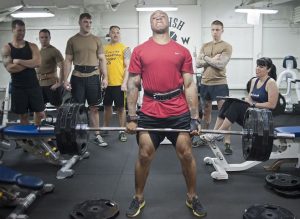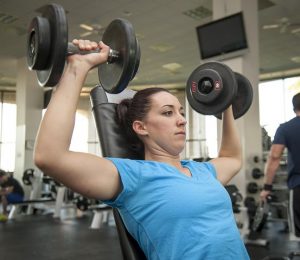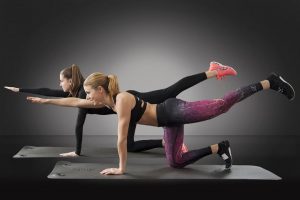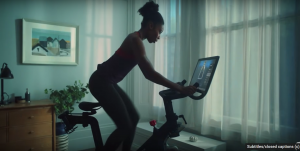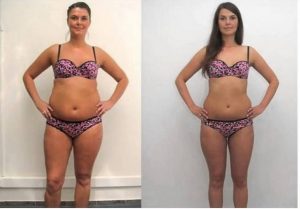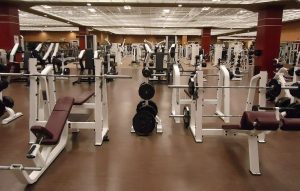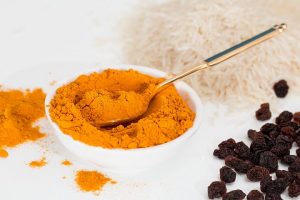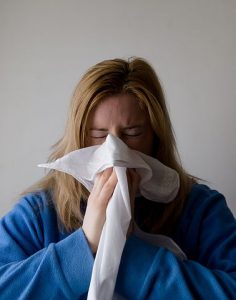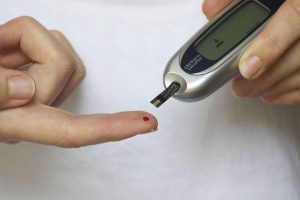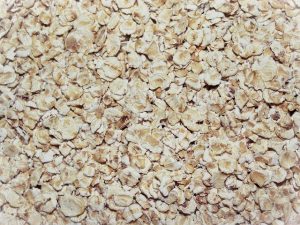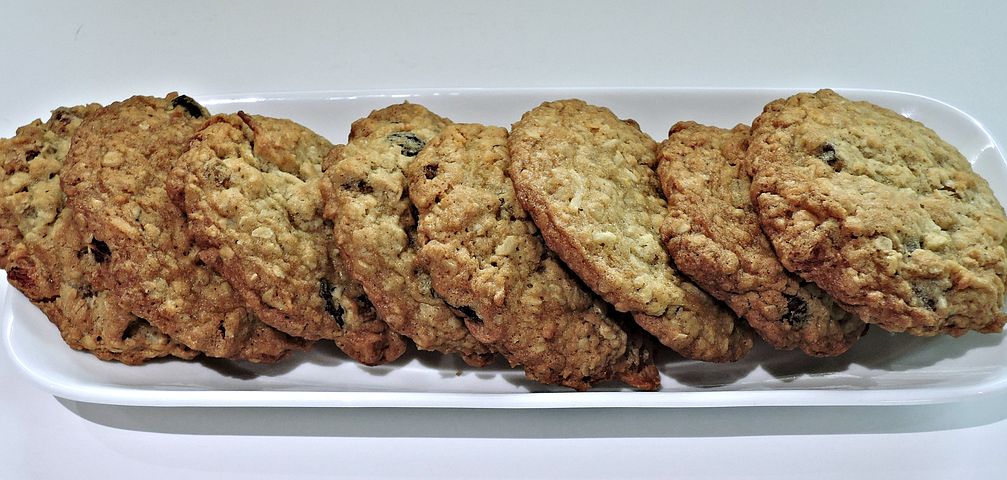This week, TargitFit is pleased to bring you an informative health article by Emma Lymn:
 Thanks to soda, junk food, and juices, the incidence of Type 2 Diabetes continues to rise. In fact, it’s gotten worse.
Thanks to soda, junk food, and juices, the incidence of Type 2 Diabetes continues to rise. In fact, it’s gotten worse.
Today, we’re seeing young kids being diagnosed with the condition. And what was once a disease that only affected adults is now making its way to teenagers.
Type 2 Diabetes occurs when your blood sugar stays high for long periods of time. This happens because there’s too much glucose in your bloodstream.
Left uncontrolled, it can damage the vessels that carry blood to your organs, affecting the supply of blood they receive. As a result, it can trigger even more serious health problems in the long term, including heart and kidney disease, poor vision, and nerve problems.
To help prevent this from happening, here are easy things you can do to lower your blood sugar naturally.
1. Don’t Sit for Too Long
 Most of us work behind a desk. That’s why the average person spends about 12 hours a day sitting down (1). If you spend 8 hours sleeping, that means 75% of the time you’re awake is spent seated.
Most of us work behind a desk. That’s why the average person spends about 12 hours a day sitting down (1). If you spend 8 hours sleeping, that means 75% of the time you’re awake is spent seated.
That’s a bad thing.
According to a 2017 study, too much sitting or being sedentary increases your mortality. (2) In fact, those who sat more than 13 hours daily had a 200% higher risk of death compared to those who sat less than 11 hours a day.
This happens because prolonged sitting causes a host of health problems, including hypertension, high blood sugar, stroke, and heart attack. (3)
The good news is that standing up every few minutes or so helps. Research also shows that getting up and standing one and a half hours after eating lowers post-meal blood sugar by 43% compared to sitting down. (4)
Since the biggest glucose spikes tend to happen after you eat, enjoying a post-lunch or after-dinner walk is a good idea. Just getting up from your chair and walking will help prevent your glucose levels from spiking too much after meals.
2. Make Sure to Get 7 to 8 Hours of Sleep Nightly
 Getting enough sleep also helps keep your blood sugar down. When you sleep, your body is able to repair and recover. Sleep also allows it to properly regulate your hormones. These are just a few of sleep’s many benefits to your health.
Getting enough sleep also helps keep your blood sugar down. When you sleep, your body is able to repair and recover. Sleep also allows it to properly regulate your hormones. These are just a few of sleep’s many benefits to your health.
On the other hand, lack of sleep or poor-quality sleep has been shown to cause weight gain and increased blood sugar levels. (5)
That’s because it prevents your body from recuperating. It also disrupts your hormones which help regulate your appetite, insulin, and cortisol levels—all of which affect your blood sugar.
When your glucose level gets high enough, your kidneys will work overtime to flush it out by urinating. Thus, you’ll likely wake up in the middle of the night to visit the bathroom, which further interrupts your sleep.
To prevent this vicious cycle from happening, try to get 7-8 hours of sleep every night. This gives your body enough time to fully rest and recover.
3. Keep Your Stress Levels Down

Deep breathing, meditation, and yoga help reduce stress which can, in turn, help keep blood sugar down.
Studies have shown that stress increases your blood sugar. (6) That’s because any time you feel stressed, your body goes into fight or flight mode. This is its natural way of preparing to react or protect itself in case there’s an emergency.
To do so, it increases the production of certain hormones, including adrenaline and cortisol. These hormones cause your liver to secrete glucose into your bloodstream. That’s why you’ll feel a burst of extra energy and feel more alert when you’re stressed.
While it isn’t bad if it happens once in a while, being chronically stressed keeps your blood sugar elevated for long periods of time. Thus, increasing your risk of developing Type 2 diabetes.
Since you don’t always have full control of things in life, stress is inevitable. Thus, the best way to help reduce it is to have a few stress management techniques you can turn to. Meditation, deep breathing, and yoga are just a few things that work well against stress.
4. Walk After Meals
 In a healthy individual, blood sugar starts to rise about 10 to 15 minutes after eating a meal. It continues to do this for the next 2 hours or so.
In a healthy individual, blood sugar starts to rise about 10 to 15 minutes after eating a meal. It continues to do this for the next 2 hours or so.
How long it stays up and how high it goes often depends on what you just ate. The more carbs and sugar you consume, the higher and longer it stays elevated.
Unfortunately, large and prolonged glucose spikes that happen day in and day out are bad for your health because they increase your risk of developing Type 2 diabetes or pre-diabetes.
One simple way to reduce the magnitude of these spikes is to take a walk right after your meals. Research shows that walking 15 minutes after eating helps lower post-meal blood glucose levels. (7)
In doing so, it helps regulate your blood sugar and keeps it from spiking too much.
5. Keep an Eye on Your Coffee and Caffeine Consumption

Big coffee drinker? Find out how caffeine affects your blood sugar and adjust your consumption accordingly.
Caffeine, which is the main ingredient in coffee, affects people in different ways. For some, it can cause a short-term increase in blood sugar. For others, it has no effect on their glucose levels.
Meanwhile, some research suggests that long-term coffee consumption helps lower diabetes risk. (8) But, if you have type 2 diabetes, its effects can be more erratic.
So, if you drink coffee or consume other things that contain caffeine, it may be a good idea to see how they affect your blood sugar levels before making them a regular habit.
Here’s a simple way to test coffee’s effects on your glucose level.
- When you wake up in the morning, don’t eat or drink anything. This ensures you’re on an empty stomach.
- Take your blood sugar level. This will give you a baseline to compare after you consume a cup of coffee.
- Next, it’s time to enjoy your cup of coffee. Ideally, drink it black so you don’t introduce other factors that can affect the results.
- For the next 2 hours, don’t do anything that can affect your blood sugar. This includes eating, drinking, getting stressed or any kind of physical activity.
- Once 2 hours are up, retake your blood sugar and compare the result with your baseline.
This will give you a good idea on how your body reacts to coffee and the caffeine in it.
- If your blood sugar goes up, then you may want to limit how much coffee you consume in order to reduce the spikes that can occur after each cup.
- If your blood sugar stays the same or drops by a little bit, then caffeine probably doesn’t affect your blood glucose.
6. Limit Soda, Juice and Energy Drinks

It’s no surprise that soda is packed with sugar, but there’s a lot of it hiding in “healthy” beverages like fruit juices and energy drinks, too.
Soda, fruit juices and energy drinks all taste great. They’re definitely more flavorful than water. But they also contain a lot of sugar.
Here’s a quick look at how much sugar your favorite drinks contain. To make it easy to compare, we’ve set all the drinks to 12-ounce sizes. (9)
- Cola = 10.25 teaspoons of sugar
- Orange juice: 7.5 teaspoons of sugar
- Orange soda = 13 teaspoons of sugar
- Sweet tea = 8.5 teaspoons of sugar
The problem here is that the American Heart Association recommends limiting the amount of added sugar you consume daily to 6 teaspoons for women and 9 teaspoons for men.
That means drinking one 12-ounce can or bottle of these beverages will easily put you over the limit for the day once you add other foods or drinks you consume.
Closing Thoughts
By applying some or all of these simple changes to your current lifestyle, you’ll be able to improve your blood sugar levels and stay healthy so you can keep doing the things you love.
References
(1) https://www.juststand.org/the-facts/
(2) https://edition.cnn.com/2017/09/11/health/sitting-increases-risk-of-death-study/index.html
(3) https://www.diabetesselfmanagement.com/blog/sitting-with-diabetes/
(4) http://oem.bmj.com/content/71/2/109.long
(5) https://www.ncbi.nlm.nih.gov/pmc/articles/PMC4394987/
(6) https://www.ncbi.nlm.nih.gov/pubmed/28244581
(7) http://care.diabetesjournals.org/content/early/2013/06/03/dc13-0084
(8) https://www.ncbi.nlm.nih.gov/pubmed/20008687/
(9) https://www.nhlbi.nih.gov/health/educational/wecan/downloads/tip-sugar-in-drinks.pdf
Emma Lymn is the editor of Health Grinder, a health and nutrition blog. She is passionate about helping others learn to eat healthy and lose weight. A proud mom of two kids and a very spoiled dog, she enjoys traveling and volunteering in her spare time.



